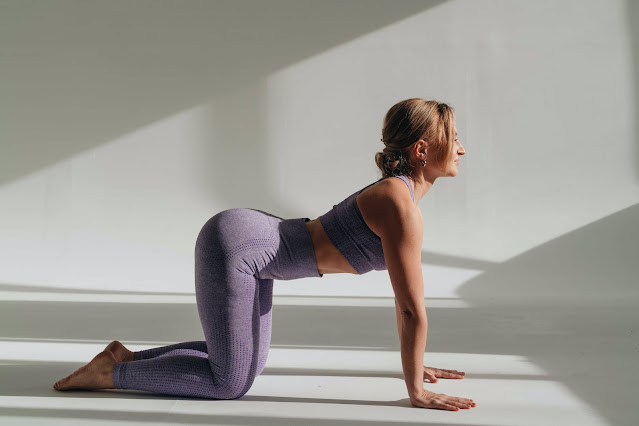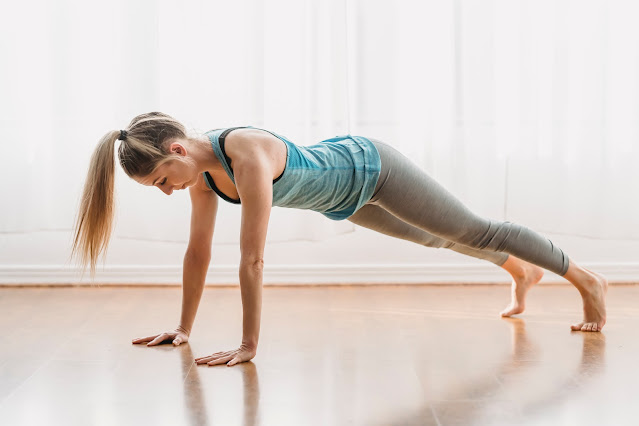Posture is the way in which a person holds his or her body while standing, sitting or even lying down. When your posture is good, your body is positioned correctly, and your weight is evenly balanced. On the other hand, bad posture can burden your spine and cause rounded shoulders and back/neck pain.
Why is good posture important?
Having a proper posture not only increases your confidence and makes you look good but also offers long-term health benefits. A good posture helps to keep your spine, bones and joints aligned and prevents muscle fatigue. Adopting a correct posture while sitting, standing and walking prevents backache and muscular pain, keeps your nerves healthy and improves blood flow. It also helps easier breathing and develops strength and balance in your body.
Contrastingly, slouching or slumping while reading a book, looking down continuously at your smartphone (causes 'text neck') or hunching at your desk while writing or working on your computer for long hours are all poor postures. Apart from causing headaches, shoulder, neck and back pain, these incorrect postures often lead to decreased flexibility, acid reflux, constipation and other gastrointestinal problems.
Tips for Improving Posture
Generally, people pay more attention to their body and start improving their posture when they experience body aches or when they feel their muscles getting tight.
Here, the National Institute of Health (NIH) recommends a few tips for improving posture in general -
* Maintain a healthy weight
* Often stand and take brief walks when doing sedentary (continuous sitting) work
* Wear comfortable footwear (preferably low-heeled shoes)
* Be mindful of your posture while doing daily chores
* Stay more active by exercising regularly
Best Posture Exercises
Below given are 7 posture correcting exercises that can be comfortably done at home. These workouts focus on bettering your flexibility, balance and muscle strength for a better posture.
1. Cat-Cow Pose
The cat cow stretch is also known as 'Chakravakasana' in yoga. This asana is known to strengthen the spine, improve balance and posture and is considered ideal for people with back pain. This calming pose also boosts flexibility and promotes blood circulation. Releasing tension from the neck, shoulders and torso are other benefits of this workout.
How to Do:
- Start by coming to tabletop pose. Your palms should be firmly on the floor, hands shoulder-width apart and your knees underneath your hips and hip-width apart.
- Inhaling, move into a cow pose by arching your back, drawing your shoulders out and lifting your chin and head up.
- Next, reverse the above position and move into a cat pose. Exhaling, press down strongly by gazing towards your thighs, while rounding your spine and tucking your tailbone down.
- Repeat both the animal poses in continuous motion, 10-15 times.
2. Bridge Pose
The Bridge pose or 'Setu Bandha Sarvangasana' is a backward bending yoga posture. This asana stretches your shoulders, neck, chest and abdomen while strengthening your back muscles, thighs and ankles. It also counteracts slouching, improves posture and helps relieve neck and lower back pain.
- Begin with lying on your back and knees bent.
- Keep your feet parallel to each other and hip-width apart. Your arms should be straight, beside your body with palms facing down.
- Inhale and gently raise your hips, back and the back of the thighs from the floor. Your raised thighs should be parallel to each other.
- Here, you can either place your palms beside your body (as is) or interlace your fingers under the back and on the floor.
- Hold the entire posture firmly for 30 seconds to 1 minute.
- Exhale, lower your body back to the original position and relax. Repeat.
3. Child's Pose
Child's pose or Child's Resting Pose is popularly referred to as 'Balasana' in yoga. It is a beginner's yoga pose and designed to relieve fatigue and offer relaxation to the body and mind. Child's pose helps with gently stretching your shoulders, spine, hips, thighs and ankles. Regular practice of this asana also helps in good digestion, improving blood flow to your head and in relieving neck and lower back pain.
How to Do:
- Bend your knees with your hips seated comfortably on your heels. Keep your back straight and palms on your thighs.
- Bend forward while lowering your forehead on the floor or yoga mat. Keep your hands straight and aligned with your knees. Your torso should be between your knees. Breathe normally, close your eyes and relax.
- Stay in this position for 30 secs to a minute.
- Return to the original position. Repeat.
Also Read: 7 Basic Yoga Asanas for Beginners
4. Standing Chest Opener
Chest Opener is an easy and effective chest stretch exercise. Performing this exercise daily, helps in releasing tension from the chest muscles. Increased flexibility, blood flow and mobility in the upper part of the body and strengthening the upper back for a better posture are other benefits of this chest opening workout.
How to Do:
- Stand with your feet about hip-width apart.
- Bring your arms behind, to clasp your fingers/palms behind your back.
- Ensure that your head, neck and spine are aligned in a straight line. Look ahead.
- While inhaling, push your chest upwards, pull your shoulder blades back and downwards while slightly raising your clasped hands behind your back.
- Hold this pose for about 15-30 seconds.
- Release this pose, relax and breath normally.
- Repeat 3-5 times.
5. Plank Pose
Plank pose is known by different names, but most popularly referred to as 'Phalakasana' in yoga. This pose is known to help improve a person's posture by strengthening and toning the triceps muscles, arms, shoulders, lower back, core (abs) and thigh muscles.
How to Do:
- Start by coming to the tabletop pose. Your palms should be firmly on the floor, hands shoulder-width apart and your knees hip-width apart.
- With your gaze down and palms firmly pressed against the floor, step back to straighten your legs and your toes tucked. Ensure that your body is in a straight line, with your core engaged and back flat.
- Hold this position while breathing normally for as long as you can.
- Release by slowing, coming back to the original position.
- Repeat 3-5 times.
6. Downward-Facing Dog Pose
Downward dog pose is known as 'Adho Mukha Svanasana' in yoga. It is one of the beginner level yoga poses, but gives full body stretch to the person doing it. A downward-facing dog pose helps to open up your shoulders and chest, align your spine and thereby improve your posture. This weight-bearing exercise also stretches your lower body, strengthens your arms and abdominal muscles and improves digestion and blood circulation.
 | |
|
How to Do:
- Get down on all your fours to form a tabletop pose i.e., hands and knees pressed on the floor with your back straight and parallel to the floor. Ensure that your palms are spread flat out.
- As you exhale, curl your toes under, press your palms onto the floor and lift your knees and hips up, as much as you can. Your hands and legs should be straight. (In the beginning, some might find it difficult to keep your legs straight. A bend in the knees is okay at this stage. But over time you will be able to straighten your legs).
- Keep your neck lengthened but look down and inward towards your belly.
- Hold this downward dog pose (which also looks like an 'inverted V') for about a minute. Take long and deep breaths.
- Exhale and slowly return to the tabletop position.
Remember to start small and gradually increase the number of repetitions and sets as your strength improves. With consistent effort, you'll be standing tall and feeling great in no time!
Does Posture Exercise Routine Work?
Yes. Following posture correction exercises in your regular fitness regime will help align and straighten your spine and also make you stand and sit a bit taller. Additionally, these workouts will help in avoiding pains and aches that come from adopting a poor posture for a long time.
How Much Can Posture Increase Height
When you have bad posture, you do not reach your 'true height'. Your hunched back while walking, and continuous slouching/slumping while sitting, can strain your back and neck and make you look shorter than you actually are.
Remember, it is the spine that supports a human body and gives its structural stability and integrity. When you improve the way you stand, sit, walk and sleep, you not only allow your spine to align and back to straighten up, but your chest looks stretched and expanded too. This can make you appear taller by about 1 to 2 inches naturally.
In conclusion, good posture is vital to maintaining a healthy body and preventing pain and injury. Incorporating these easy to moderate-intensity posture correction exercises into your workout routine and being mindful of your posture throughout the day can help improve your overall physical well-being.
Disclaimer: The researched content in this post is for educational and informational purposes only and is NOT a substitute for professional medical advice. Always consult a physician or qualified health provider with respect to your individual health and fitness goals and medical conditions, if any.





















No comments:
Post a Comment